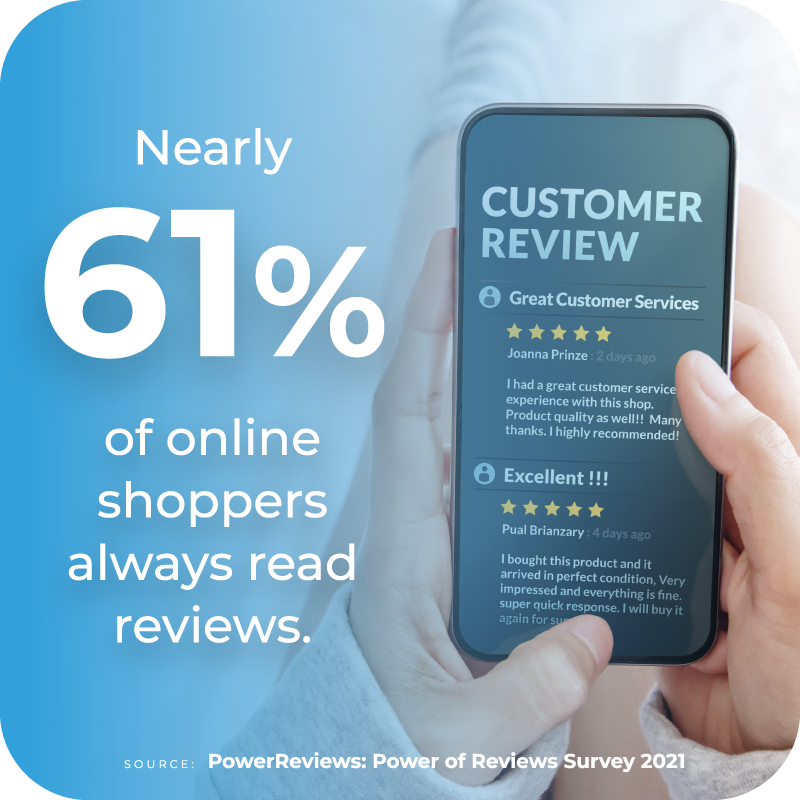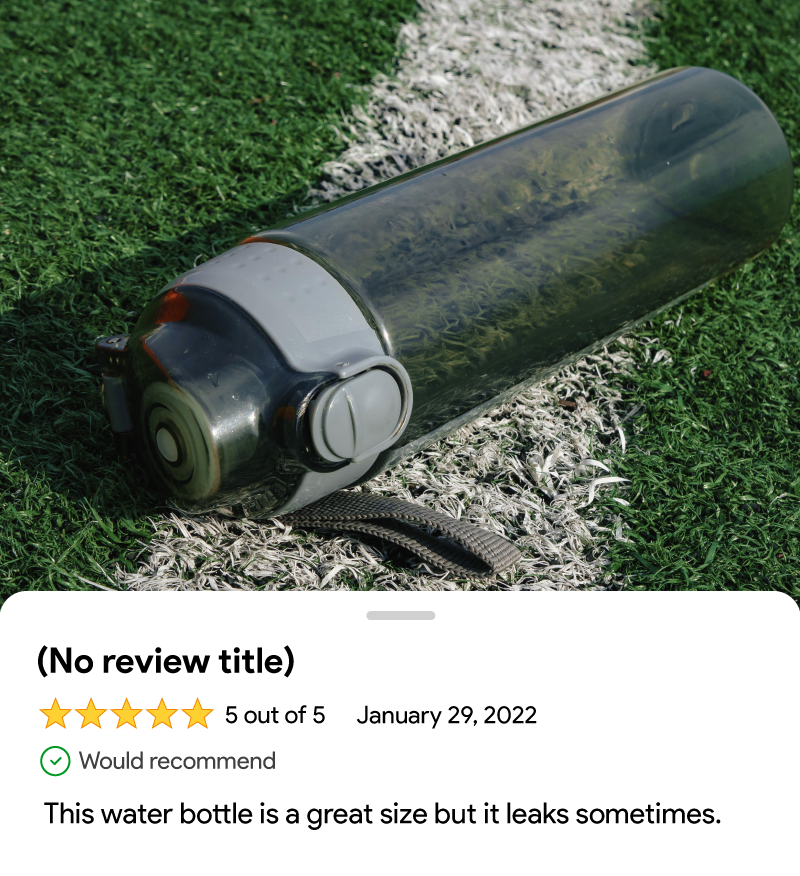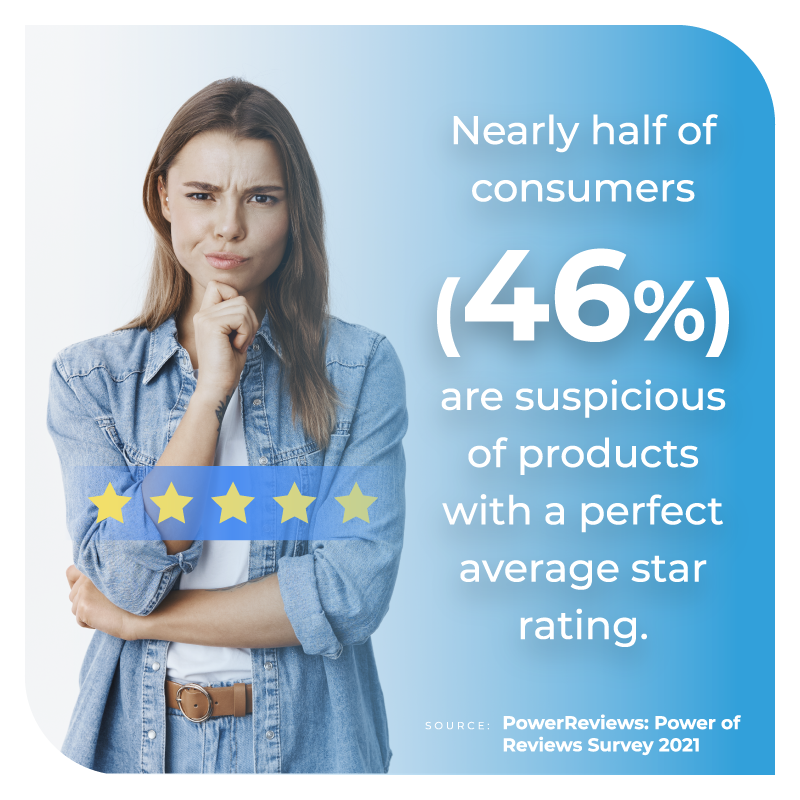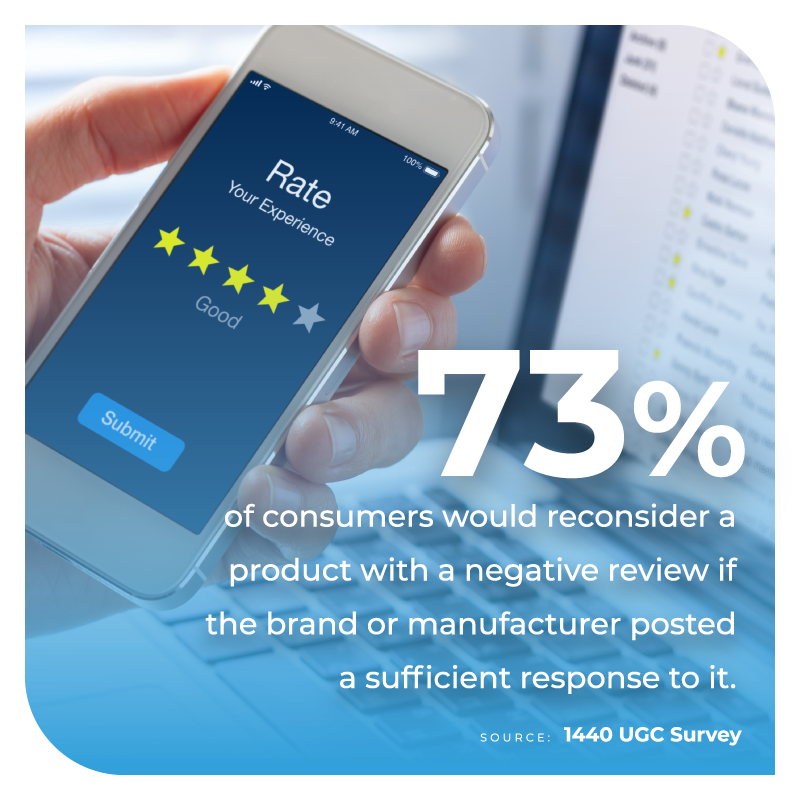Fashion Nova and the Problem With Suppressing Negative Reviews

Over-Moderating Customer Feedback and Q&As Reduces Brand Authenticity
Consumers have endless information at their fingertips when researching what products to purchase. But these days, they rely less on brand-provided messaging and marketing – and more on feedback from others like them.

How do they access this feedback? Increasingly, by engaging with reviews, questions and answers (Q&A) and other types of user-generated content. Today, nearly 61% of online shoppers always read reviews, and another 33% regularly do so. And our recent research found that 23% of consumers always read Q&A when researching products, and 66% sometimes do so.
Sure, recommendations from family and friends are still important. But according to BrightLocal, the majority (79%, to be exact) of consumers actually trust online reviews as much as personal recommendations from family and friends.
Why is it that consumers trust reviews and other types of UGC submitted by complete strangers? Because it’s real. This content is written by consumers like them, with no skin in the game, rather than a brand with the ultimate goal of selling something.
Fashion Nova’s Costly Faux Paux
That’s why the big news about Fashion Nova being fined by the F.T.C. for suppressing negative reviews is so interesting. According to the New York Times, the popular clothing site was required to pay a $4.2 million fine for holding low-star reviews for approval before they could be posted. It did not approve hundreds of thousands of negative reviews to be published.
So, not only does the company have to pay a hefty fine, it lost out on all of that customer feedback that would lend to an authentic brand experience. Consumers use this information to make informed decisions, and brands can use it to improve their products and experiences. Consumers trust reviews and other UGC because it’s authentic. And brands must make it a priority to preserve this authenticity.
A Solid UGC Moderation Process is Essential – But Resist the Temptation to Over-Moderate Your Content

One key way brands can help preserve the authenticity, integrity and helpfulness of user-generated content is by moderating it before it goes live on product pages.
A solid moderation process helps ensure content is free from issues that could harm a brand’s reputation – such as profanity, slander, inappropriate images, legal or liability issues, and personally-identifying information, among others. A great moderation process also ensures all content that’s posted for a given product is relevant – and therefore helpful to shoppers. For example, moderation can help brands avoid situations like this one – where a review and photo is posted for a water bottle…on the product page of a trash can. Though it’s a great review, it’s not exactly helpful for someone shopping for a trash can.
Moderation can also filter out location reviews like this one, which was written by someone who’s never visited the establishment in question.
While the moderation process looks different from brand to brand, it typically involves some combination of automated and human-powered moderation. For example, when a consumer submits a review to a brand’s site that uses Bazaarvoice, the content is reviewed by a Natural Language Processing (NLP) tool. Then, the content is either rejected, automatically approved and published, or passed along to a human moderator to review.
Of course, it makes sense for brands to moderate (and then reject) problematic content. However, brands should never reject content simply because it’s negative or doesn’t portray the brand in the best light.
4 Reasons Not to Supress Negative Reviews
Getting a negative review stings. While it can be tempting to filter out this content during the moderation process, resist the temptation! Consumers value UGC for its authenticity. Displaying all content – regardless of sentiment – is an important way to preserve that authenticity.

Negative reviews are never the aim. But there are four key reasons why you should avoid over-moderating this negative content.
1. The Occasional Negative Review or Question Builds Trust with Customers
According to research from Northwestern University, products with a perfect 5.0 average star rating are perceived as “too good to be true” by consumers. The research found that consumers are more likely to purchase a product with an average star rating between 4.2 and 4.5 than one with an average star rating of 5.0.
What’s more, a survey from PowerReviews found that nearly half of consumers (46%) are suspicious of products with a perfect average star rating. This number is even higher – 53% among Generation Z shoppers.
Consumers are smart. They know that a single product can’t be all things to all people. Displaying negative and neutral reviews shows your shoppers that you have nothing to hide – which helps you build trust with them. In addition, the occasional negative review can actually boost your sales, as it gets you closer to that sweet spot of 4.2-4.5 stars.
2. Negative Reviews Fuel Better Purchase Decisions (and Fewer Returns)
The same PowerReviews survey we mentioned earlier found that 52% of online shoppers specifically seek out one-star reviews. This negative content can help these shoppers more easily identify the products that will (and won’t) meet their needs.

When a shopper filters to only see negative reviews, they can easily identify the worst that’ll happen if they buy the product. And in many cases, reading a few negative reviews won’t deter a shopper. In fact, a PowerReviews analysis found that website visitors that filter to only see one-star reviews actually convert at a rate that’s 108.8% higher than average!
Consider this example. A parent is shopping for a nightstand for her child’s room. She’s considering one model, but first, she filters to read the one- and two-star reviews. A few of the reviews indicate that the product is difficult to assemble when doing so alone. The shopper is very handy, and she has a family member who will help her assemble the piece. So these reviews don’t deter her. She purchases the nightstand, easily assembles it and goes on to write a five-star review.
Of course, there are times when a negative review will be relevant to the shopper reading it. If this is the case, that shopper can then find a product that better fits her needs. She’ll be happier with the product – and less likely to return it.
3. Negative Reviews or Questions Give Your Brand a Golden Opportunity to Shine with a Great Response
A thoughtful response to a review can help you turn a bad situation around. If you’re able to help the reviewer resolve their issue, you may be able to win back their trust and loyalty. After all, according to research from Salesforce, over three-quarters of consumers will forgive a company for a mistake after receiving great service.
What’s more, a BrightLocal survey found that among consumers who read reviews, 96% also read business responses to reviews at least occasionally. Future shoppers will read your review responses, which will help them to see you’re a brand that values feedback and cares for its customers. And, a great response might just make them willing to overlook the occasional negative review. Our own research found that 73% of consumers would reconsider a product with a negative review if the brand or manufacturer posted a sufficient response to it.
4. Negative Reviews and Questions Shed Light on Opportunities to Improve
Reviews and Q&A – especially the negative kind – can help you identify ways to better serve your customers.
Regularly monitoring your reviews can shed light on fixable flaws you weren’t aware of. For example, reviews for this shampoo product are largely positive, but several mention issues with the bottles. The brand can rework the bottles based on customer feedback — and boost customer satisfaction.
Reviews and Q&A can also help you identify opportunities to improve the experiences your customers have with your brand. For example, several of the reviews for this makeup product specifically mention the wasteful packaging. Eco-friendly packaging is important for many shoppers, so this brand may consider reworking its packaging.
Identifying actionable insights from reviews and Q&A can be challenging – especially when you’re monitoring this content across several platforms. However, if you use a solution like Reputation Studio from 1440, it’s much easier. With Reputation Studio, you can consolidate all of your reviews and Q&A into a single platform. Then, you can holistically measure sentiment at the brand and product level – and uncover opportunities for improvement.
Preserve the Authenticity of Your UGC
Consumers value reviews and Q&A because of their authenticity. Make it a priority to preserve this authenticity.
While content moderation is important, avoid filtering out content simply because it’s negative. Remember: negative content, when handled promptly and appropriately, can actually benefit your brand and help you build trust with your customers.